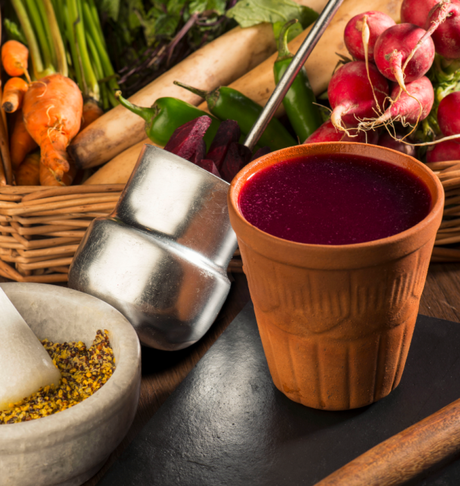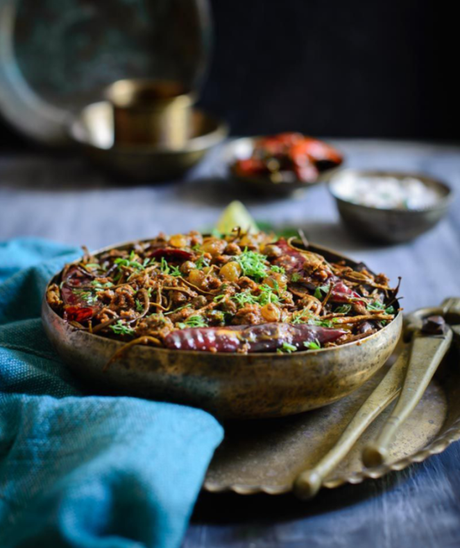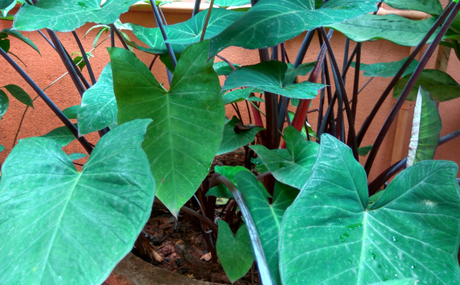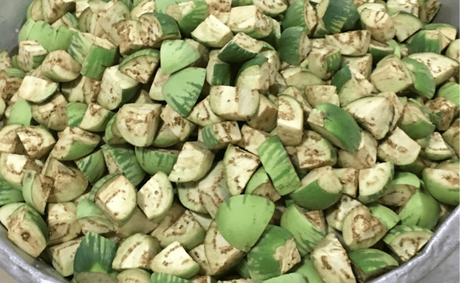Given that India is a land of diversities, it is no surprise that India’s gastronomy is the epitome of all variety, distinctiveness and absolute heterogeneity. Rightly called the Land of spices, the cuisine map of India is indeed a crowded one with each region boasting of its unique specialities and ‘must try’ dishes. Backed by a rich history spanning centuries, the cuisine of each region is influenced by native cultures, traditions and to a large extent by the agricultural produce that is in turn dictated by climatic and soil conditions. The origin of a majority of unusual, authentic local dishes are courtesy the exclusive crops grown in the particular region. Here’s a look at some unique regional produces and their delectable preparations.
Kanji

A fermented drink made with black carrots which are a rich source of antioxidants as well as vitamins C and E, Kanji is a speciality of Punjab. Harvested from October to December, before the onset of peak winter, black carrots are perishable and difficult to preserve as a raw product. Therefore, they are often processed into different products such as juice, concentrate and Kanji which is a traditional fermented beverage. Apart from black carrots, Kanji has crushed mustard seed, lemon black salt and water. The mustard added to the Kanji helps in keeping the body warm in the chilly winters. The drink is stored in a ceramic pot drink is kept in the sun and allowed to ferment for three to four days.
Ker Sangri

This is a traditional Rajasthani speciality prepared from dried Ker Berries and Sangri Beans. While both crops grow in the arid climate of Rajasthan, Ker is a shrub that bears berries with a distinctive bitter sour taste and Sangri is the bean of a flowering tree called Khejari. Grown abundantly during winters, both these crops are combined to form “Ker Sangri“. A signature dish that is a regular feature in Marwari weddings, Ker Sangri is prepared by first soaking the berries in salty butter milk which is allowed to ferment for couple of days. It is then strained and dried for a couple of days after which it is cooked in a medley of spices along with the beans. The dish serves as a perfect accompaniment to rich or rotis.
Pathrode

A delicacy that is popular in the coastal districts of Uttara Kannada, Dakshina Kannada and Udupi of Karanataka as well as parts of Maharashtra and Goa, Pathrode is essentially steamed pinwheels prepared using colocasia leaves. The latter are herbaceous perennial plants that grow easily on the ground or even in containers and pots. Associated with festivals and special occasions, preparation of Pathrode is an elaborate process. It involves cleaning the leaves and smearing them with a thick batter made from grinding rice, coconut, tamarind and various spices. The leaves are then rolled and steamed, after which they are sliced and either deep fried or shallow fried on a skillet.
Udupi Mattu Gulla sambhar

Gulla is an indigenous variety of green brinjal cultivated in and around the village of Matti (also called Mattu) in Udupi, Karnataka. A seasonal vegetable so called due to its spherical shape, legend has it that the seeds for growing this type of brinjal was given by famous Madhwa saint Shri Vadiraja Thirtha. Accorded with the GI tag, the first produce of these eggplants is offered to Lord Krishna at Krishna Matha, Udupi even today. Grown after the monsoons, during the months of September and October, these brinjals have a unique flavor owing to their low moisture content. The ‘Gulla‘ sambhar is a delicacy of the region and is prepared by adding a ground mixture of coconut and red chillies to the brinjals which are boiled in tamarind juice, jaggery and green chillies.
Mulayari payasam

A truly unique dessert, Mulayari payasam is made from bamboo rice that is harvested by the tribals of the Wayanad region in Kerala. An extremely rare variety grown out of a dying bamboo shoot, bamboo rice is a natural short grain that is rich in carbohydrate, fiber and protein. Depending on the species, these bamboos that grow in the interiors of the forest, flower once in 40-60 years releasing the rare variety of rice seeds. The bamboos often die after flowering. Slightly chewy and sticky, the rice tastes more like wheat. The payasam is a lip smacking sweet preparation that is made after boiling the rice and cooking it with jaggery, coconut milk and dry fruits with a tinge of cardamom.
This article was originally published in The Tribune here.
